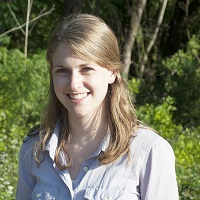PSW News
Sunday, March 15, 2015
 The four distinct generations co-existing in today’s workplace is prompting foundations to become more adept at tailoring how they communicate, both internally and with community partners. Traditionalists (born between 1927 and 1945) tend to prefer personal conversations, Baby Boomers (1946-1964) like telephone conversations, Generation Xers (1965-1980) gravitate toward email and Millennials (1981-2000) rely more on text messaging and social media. While knowing generational preferences is helpful, people are rarely one dimensional so it’s best when communications are both tailored and reinforcing.
The four distinct generations co-existing in today’s workplace is prompting foundations to become more adept at tailoring how they communicate, both internally and with community partners. Traditionalists (born between 1927 and 1945) tend to prefer personal conversations, Baby Boomers (1946-1964) like telephone conversations, Generation Xers (1965-1980) gravitate toward email and Millennials (1981-2000) rely more on text messaging and social media. While knowing generational preferences is helpful, people are rarely one dimensional so it’s best when communications are both tailored and reinforcing.Elizabeth Domenech, Director of the Shield-Ayres Foundation offers up their family foundation as a case-in-point. With three generations of family members involved in the Austin, Texas-based foundation, ranging from 19 to over 80 years of age, she says: “I adjust how I communicate depending on who I’m communicating with. I tend to text my cousins, email my parents and aunt, and pick up the phone to talk with my grandparents. Everyone is pretty comfortable on our website and uses email; my grandmother takes her iPad everywhere and uses it all the time.” Even so, she often reinforces her communications by “following-up my emails with text messages or phone calls just to be sure I’m connecting.”
External communications have become more diverse over the past couple of years too, said Domenech. With a new website and grants administration system in place, the foundation recently moved to only accept grant applications online. As well, most of the back-and-forth communications with grant applicants and grantees is now conducted by email. These transitions have resulted in time savings for applicants and trustees alike, says Domenech, enabling staff and trustees to be more present in the communities they serve. This is important, she says, as a personal presence is still very much valued across all generations.
“Internally and externally we should take care to communicate and do our work in ways that help us gain the unique contributions and perspectives offered by each generation,” said Charlie Boyce, Vice President for Community Impact with Valley of the Sun United Way in Phoenix, Arizona. In his presentation on multigenerational workplaces at the Philanthropy Southwest Annual Conference last summer, Boyce noted that while it sounds simple, it is important to ask people about their communication needs and preferences. He also emphasized the value of offering options, being flexible and continuing to adapt.
Domenech agrees. “By paying attention to how trustees and staff communicate across generations within the foundation we are better able to connect with our community partners,” she said. “We reflect on how things are going, and continue to adjust and evolve.”
